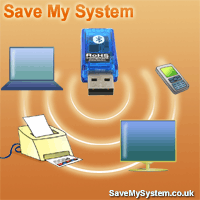GPS handhelds also benefits those who are fond of water activities like boating and kayaking. They can experience the basic features of waterproof GPS handhelds like calculating how far one location from another is, and displaying the latitude and longitude coordinates in a map.
Sportsmen that are focused in water activities like kayaking and canoeing can benefit from this. They can now enjoy the basic features of waterproof GPS handhelds, calculate distance between points, and have a map display according to latitude and longitude coordinates.
Some features should be understood before buying waterproof GPS handhelds, as they can be found in its specifications, and worth the comparison among models. Such features are also suitable for older and non-waterproof units.
Some characteristics should be known before buying waterproof GPS handhelds. Such characteristics are used in specifications sheet, and are good comparison points between units. The following characteristics are not only applicable for waterproof units, but also to non-waterproof handhelds.
Waypoints: It is also called POI or Points of Interest. Waypoints are useful in storing landmarks and important locations along the trip. Sportsmen can store data about the location of their last campsite, or the coordinates where they changed directions. Some units can store 1000 waypoints, but for common usage, 500 will be enough. Waypoints are analogous to tree markings implemented by past sportsmen when in a forest. In addition, GPS units can do calculations on two waypoint data, or delete past waypoints to free some memory for another. Sophisticated units have the feature to exchange waypoint data among GPS handhelds, allowing sportsmen to share their experience and past routes.
Topographical Maps: Most GPS can electronically display 2D or 3D maps, but older models do not. For such models, plotters will be required to have a printout of the map. Advanced models can go beyond normal topographic information by implementing Digital Elevation Model technology, commonly called as DEM. It is a feature to have better visualization of contours at different zoom levels. Moreover, handhelds can store new maps by accessing data cards and compact discs.
Wide Area Augmentation System: Commonly known as WAAS, augmentation system corrects the signal received by the GPS for distances beyond 10 feet. Enabling WAAS can increase accuracy up to five times.
Advanced features of waterproof GPS handhelds include touch screen display, switch controls for various activities, expansion slots, and digital compasses. High-end units have the feature to display water depth, harbors, and other marine information. Some also comes in floatable packages for easy retrieval when dropped in water. In addition, some unit incorporates GPS with two-way radios, enabling sportsmen to have a 5-mile range communication. However, such units should first acquire FCC license before using to ensure that it will not interfere with other electronic device.
Sportsmen that are focused in water activities like kayaking and canoeing can benefit from this. They can now enjoy the basic features of waterproof GPS handhelds, calculate distance between points, and have a map display according to latitude and longitude coordinates.
Some features should be understood before buying waterproof GPS handhelds, as they can be found in its specifications, and worth the comparison among models. Such features are also suitable for older and non-waterproof units.
Some characteristics should be known before buying waterproof GPS handhelds. Such characteristics are used in specifications sheet, and are good comparison points between units. The following characteristics are not only applicable for waterproof units, but also to non-waterproof handhelds.
Waypoints: It is also called POI or Points of Interest. Waypoints are useful in storing landmarks and important locations along the trip. Sportsmen can store data about the location of their last campsite, or the coordinates where they changed directions. Some units can store 1000 waypoints, but for common usage, 500 will be enough. Waypoints are analogous to tree markings implemented by past sportsmen when in a forest. In addition, GPS units can do calculations on two waypoint data, or delete past waypoints to free some memory for another. Sophisticated units have the feature to exchange waypoint data among GPS handhelds, allowing sportsmen to share their experience and past routes.
Topographical Maps: Most GPS can electronically display 2D or 3D maps, but older models do not. For such models, plotters will be required to have a printout of the map. Advanced models can go beyond normal topographic information by implementing Digital Elevation Model technology, commonly called as DEM. It is a feature to have better visualization of contours at different zoom levels. Moreover, handhelds can store new maps by accessing data cards and compact discs.
Wide Area Augmentation System: Commonly known as WAAS, augmentation system corrects the signal received by the GPS for distances beyond 10 feet. Enabling WAAS can increase accuracy up to five times.
Advanced features of waterproof GPS handhelds include touch screen display, switch controls for various activities, expansion slots, and digital compasses. High-end units have the feature to display water depth, harbors, and other marine information. Some also comes in floatable packages for easy retrieval when dropped in water. In addition, some unit incorporates GPS with two-way radios, enabling sportsmen to have a 5-mile range communication. However, such units should first acquire FCC license before using to ensure that it will not interfere with other electronic device.
About the Author:
You can find more info about choosing the best GPS handheld from Sam R. at the GPS Handheld Guide blog.

No comments:
Post a Comment